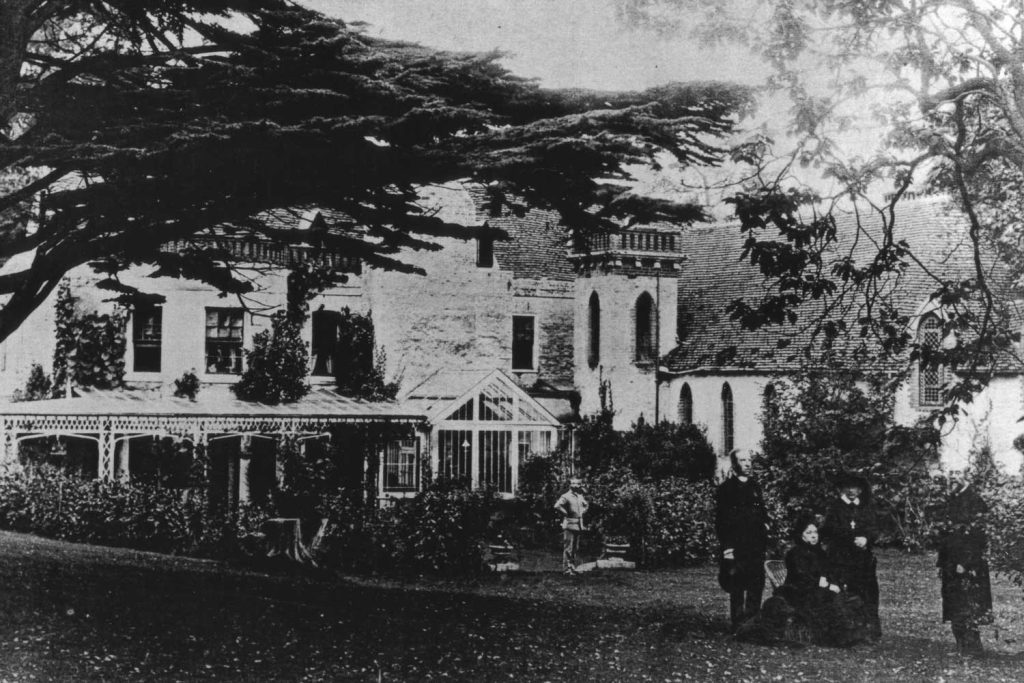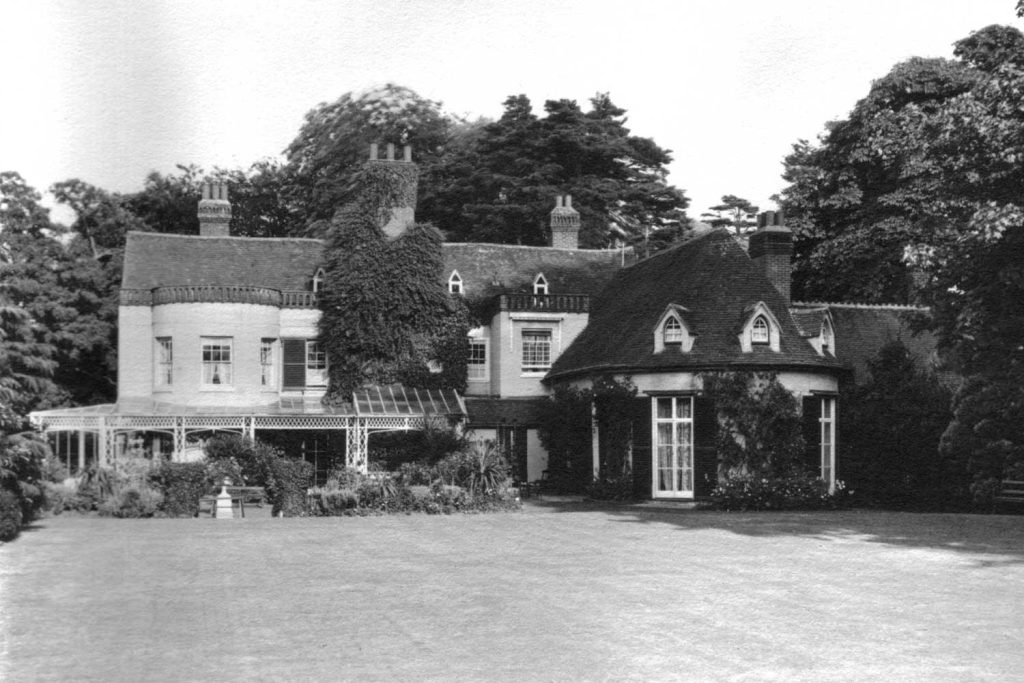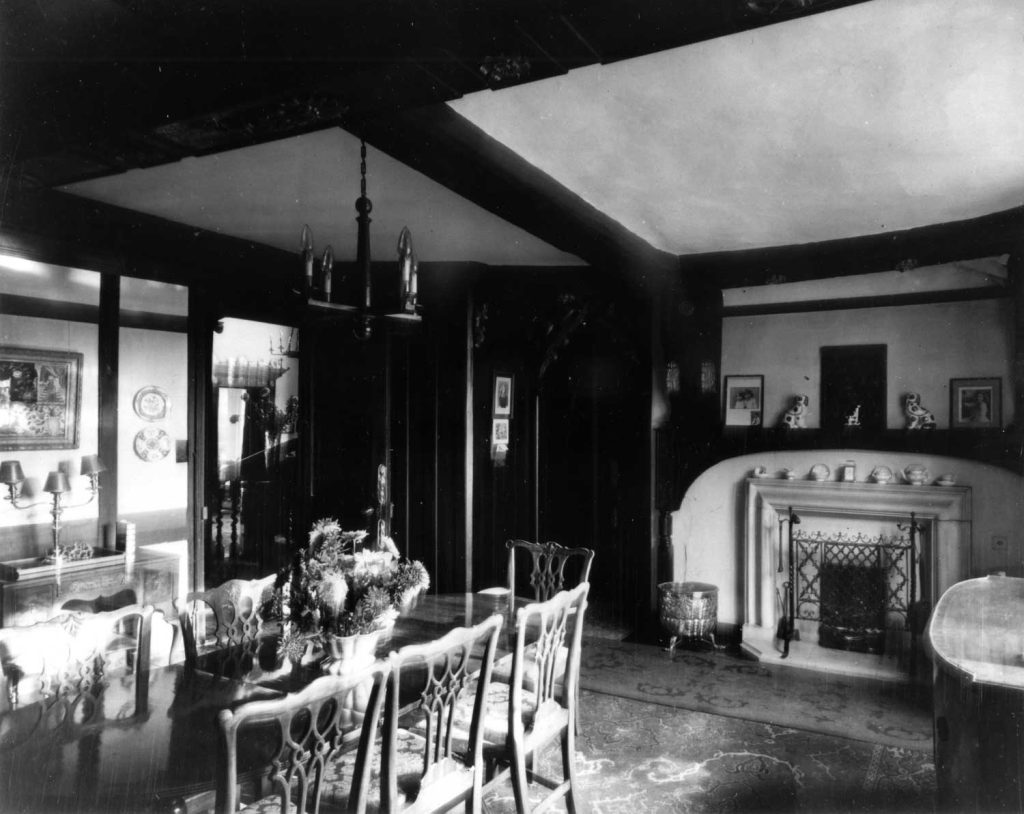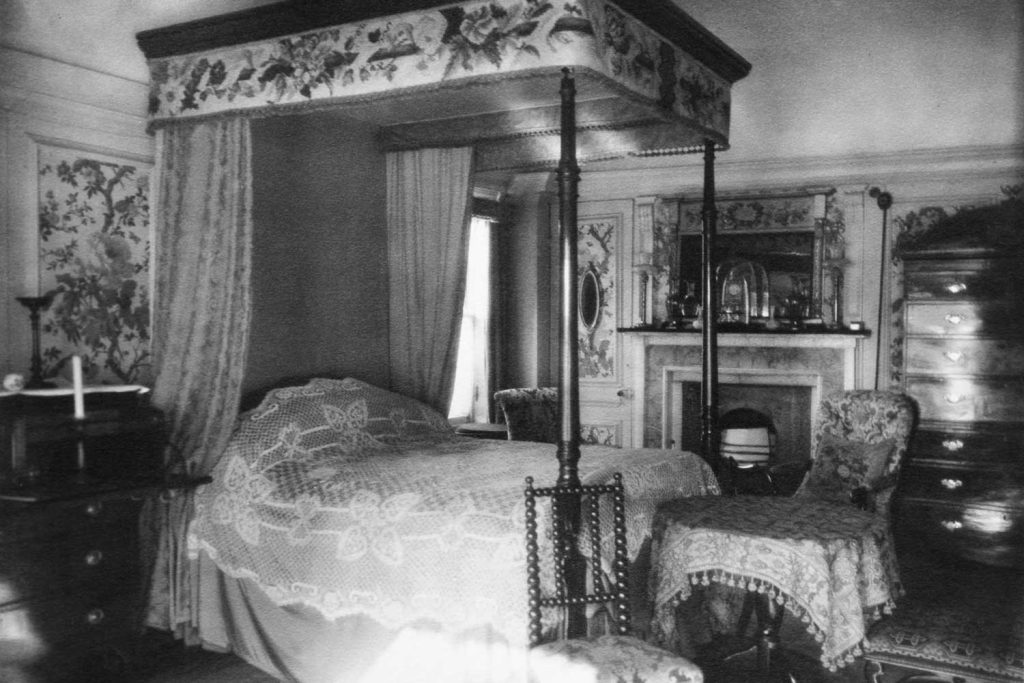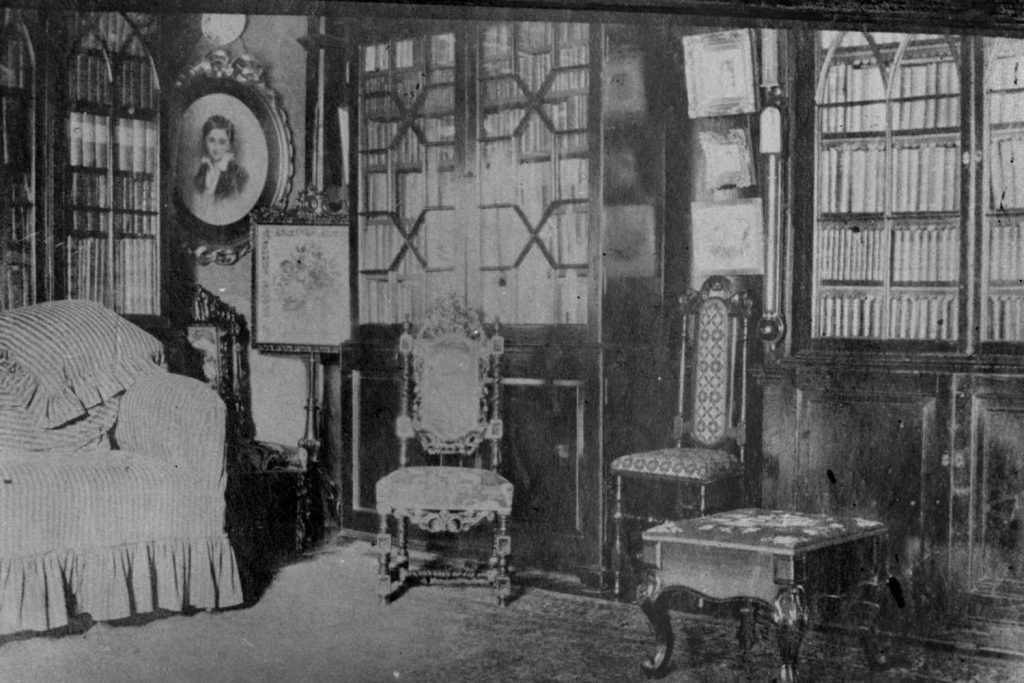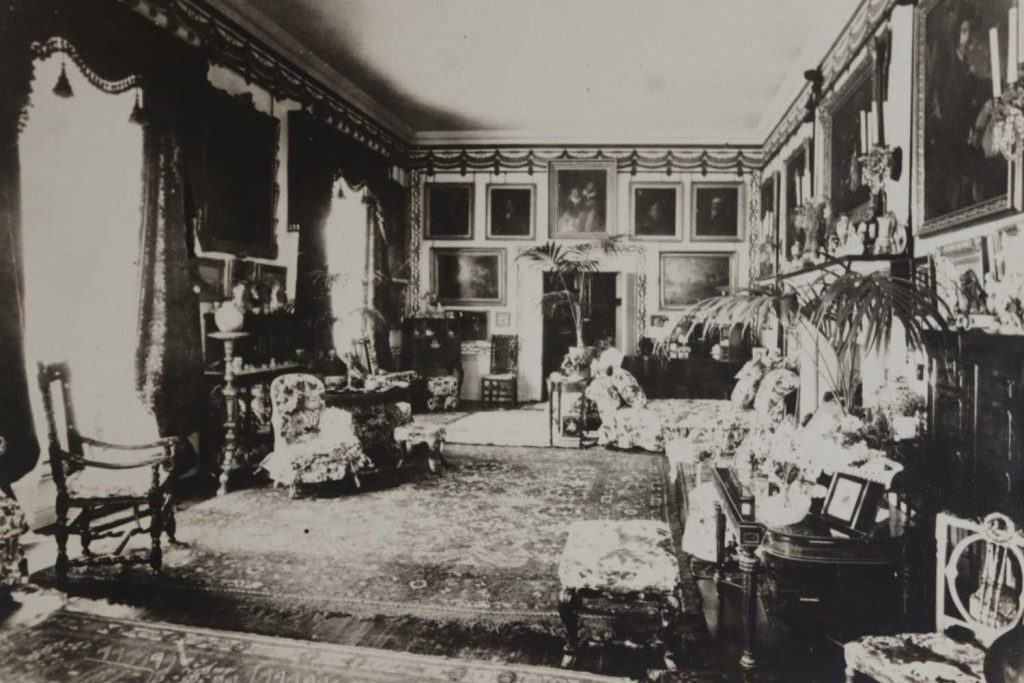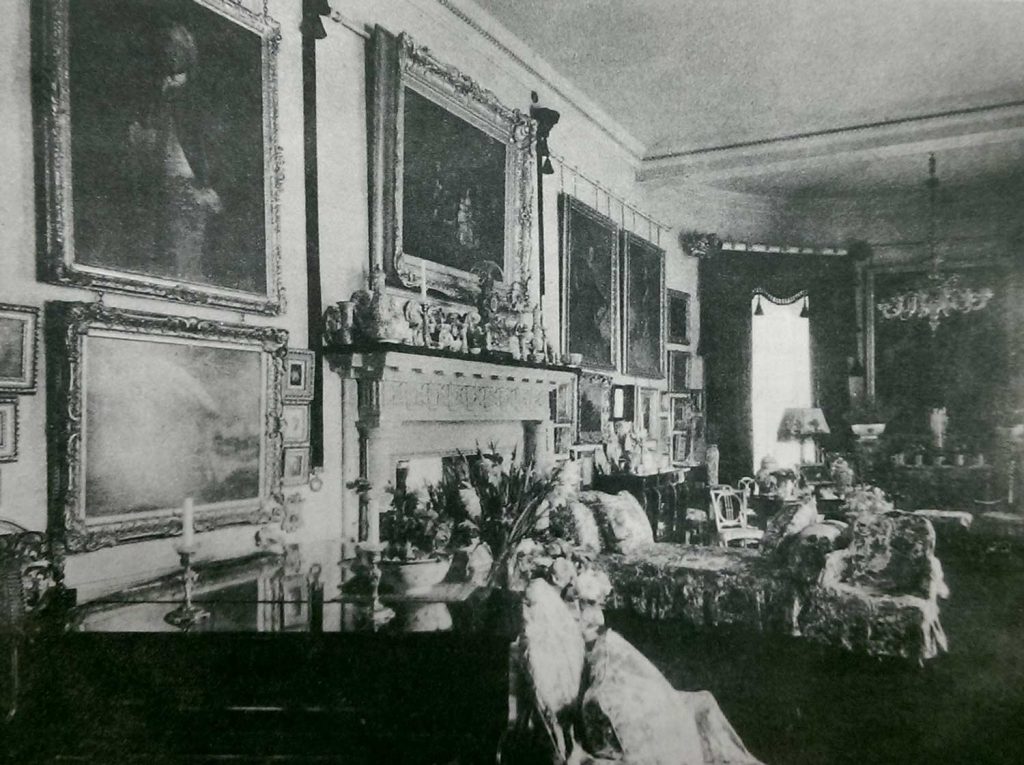Wymering Manor Stories
One of Portsmouth’s oldest houses, Wymering Manor is a rare survivor from Elizabethan times and a landmark of ancient Old Wymering village.
Wymering Manor’s revival will allow people to explore the Manor’s stories in person at the Manor, and through a wide range of digital interpretation, building on the work of the Wymering History Hunters, and student projects from the architecture course at Portsmouth University. The stories and characters are wide and varied, here’s a small taste of a few of them…
Events in the Manor garden have been at the centre of village life for centuries
Decor changed with the fashions and with the different ways residents used the spaces
The garden
The gardens to the rear of the Manor were far bigger than the gardens that remain today, having been progressively sold off for housing development after the Second World War.
Events and parties held in the gardens from the mid-nineteenth century were hugely popular, especially the theatrically staged May fetes hosted by the colourful Reverend George Nugee, who lived at the house from 1859 – 1870 and made many changes and additions.
Taste and decoration
Interiors at the Manor House are extremely distinctive, and have undergone many changes in decoration and furnishing over the centuries.
Few of the original decorative features are still visible and the furniture and art is long gone, but we have access to many photographs of the interiors from Victorian times onwards that give an insight into the fashions and tastes of the time.
The exterior has also gone through many decorative changes, including the rendering to the elevations that obscured the original close studding, and the addition and subsequent demolition of the elegant conservatory to the rear.
War and decline
Economic hardship in the 1930s touched every walk of life. In 1937 the then owner Mr. Parr sold off six and a half acres of the Manor House’s land for housebuilding. Parr Road, part of this new estate was named in his memory.
The fate of the Manor House took a significant change with the advent of World War Two when it was requisitioned for military use.
After the war when so much housing stock had been lost to bombing, more of the Manor House’s land was sold off for housing development to re-house people from heavily bombed areas including London.
Despite a Grade II listing in 1953, the house went into decline to a point where it was threatened with demolition in 1959-60.
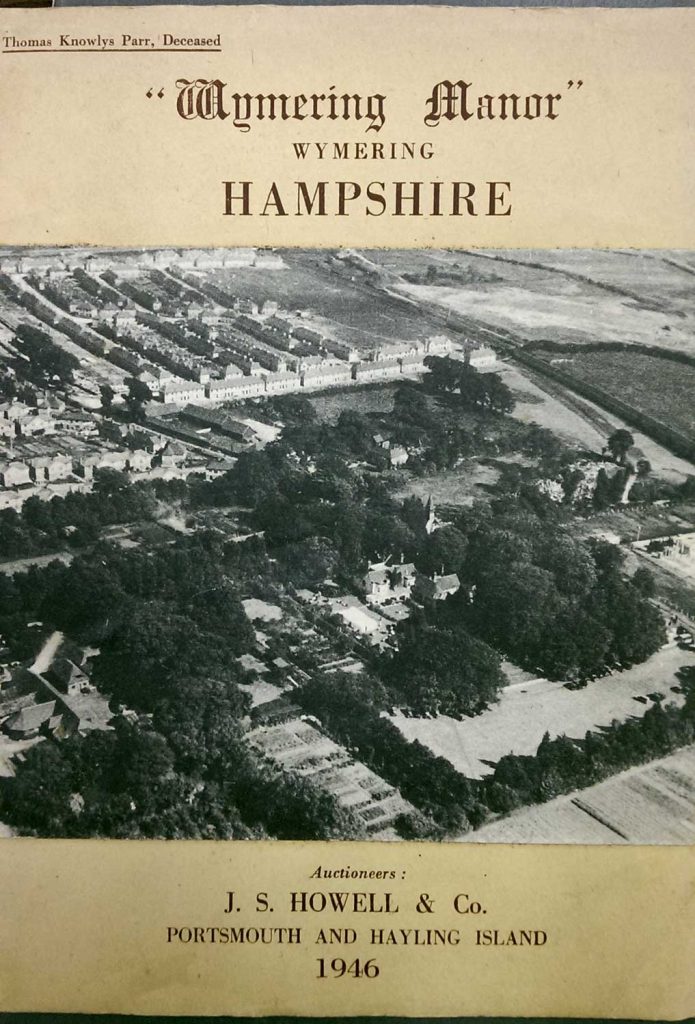
This auction catalogue cover shows the Manor House just to the bottom left of the church at the centre of the photo. Note just how much of the original gardens remained even in 1946.
Wymering Manor Archives
Revival
In the face of public pressure to save the building, Portsmouth City Council purchased the site in 1960. They decided to put the building to use as a youth hostel, which it remained until 2006, when the YHA left because the timber frame had deteriorated and was not repaired, making some rooms uninhabitable.
Proposals followed to buy the Manor House from the city and convert it into a number of houses. These were rejected by the planning committee in response pleas from the Friends of Old Wymering and the Portsmouth Society that the Manor House should remain in community use.
A campaigning group was then set up to develop ideas for community use, and a public consultation was held in the church hall. Another proposal was made – to convert the house into a hotel, run in tandem with another historic house, Buckingham House in the High Street Old Portsmouth. Again this proposal came to nothing.
Wymering Manor Trust was set up in 2013. The buildings were transferred free by the City Council to the Trust, along with a small grant towards the very large cost of restoring the timber frame and updating services and security.
In 2003 the Manor House was upgraded to a Grade II* listing at the trust’s request. Efforts to raise money to restore and revitalise the Manor House have continued ever since.

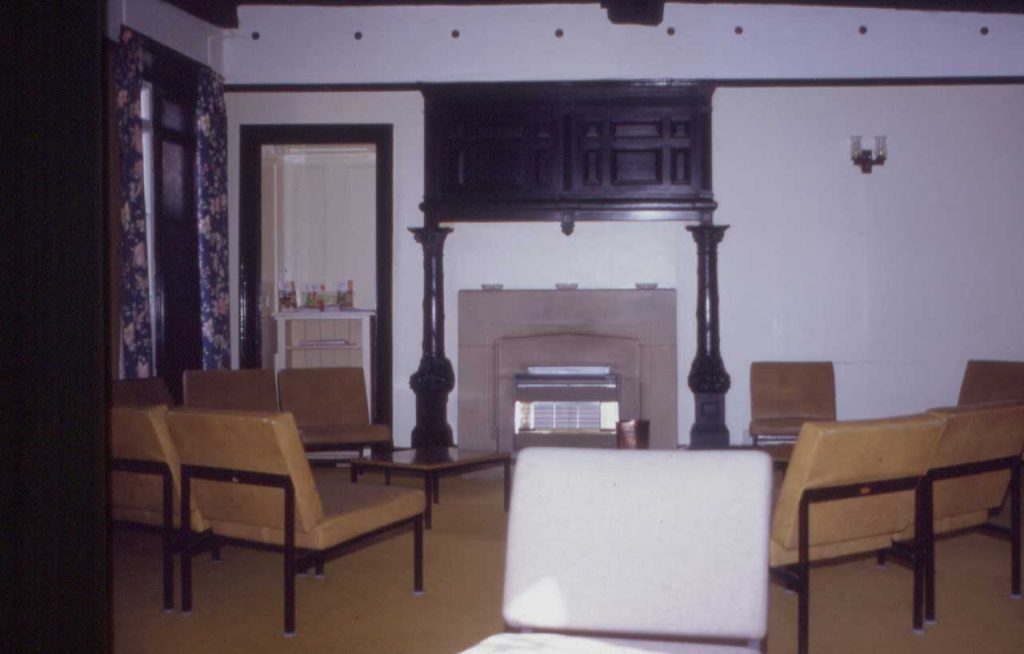
The once elaborately-furnished Great Hall and Music Room took on a very different look in the Manor’s time as Portsmouth Youth Hostel
Janet Hird
Changing hands / changing fortunes : 1835 – 2013
1835
The old manor house and sixty-eight acres was sold by the Rev. Lovelace Bigg-Wither for £5000 to Mr. John Martin, who had long been tenant, and the rest of the property, comprising about 336 acres (1.36 km2) with house, was sold in 1858 to Rev. George Nugee and Mr. Thos. Thistlethwayte for £14,827. 14s. 8d.
1899
The Manor was purchased by Thomas Knowlys-Parr and his aunt Mrs Nightingale in 1899. They moved in to the manor in 1900 and made a number of alterations, including the incorporation of features from Bold Hall near St Helen’s in Lancashire, which was demolished in 1900, to complete the conversion of the manor into a country house by 1908.
1938
The British Army took possession of the manor following the death of Knowlys-Parr for the duration of World War II.
A number of units frequented the property in addition to red cross nurses.
1946
Local builders P.J.A. and G.A. Day purchased the property in 1946 who used several acres of the gardens for the construction of houses and sold on the manor and the remaining land.
1960
Leonard Metcalfe took up residence in the property and made a number of alterations to the building. During his tenure in the building it received a Grade II listing circa 1953. He lived in the property up until his death in 1958. Leonard’s wife and his son and family lived at the manor until 1960.
2003
Wymering Manor recieves an increase in listed status, moving it from Grade 2 to Grade 2*, further recognising the historic significance of the property.
May 2006
Most Haunted Live broadcast from the City of Portsmouth and feature Wymering Manor as a location.
21st September 2010
Portsmouth City Council lists Wymering Manor for sale by Auction. The property fails to meet its reserve price.
2011
Wymering Manor is listed on the Heritage at Risk Register maintained by Historic England.
January 2013
Wymering Manor Trust Formally takes reciept of Wymering Manor after a short negotiation with Portsmouth City Council.

